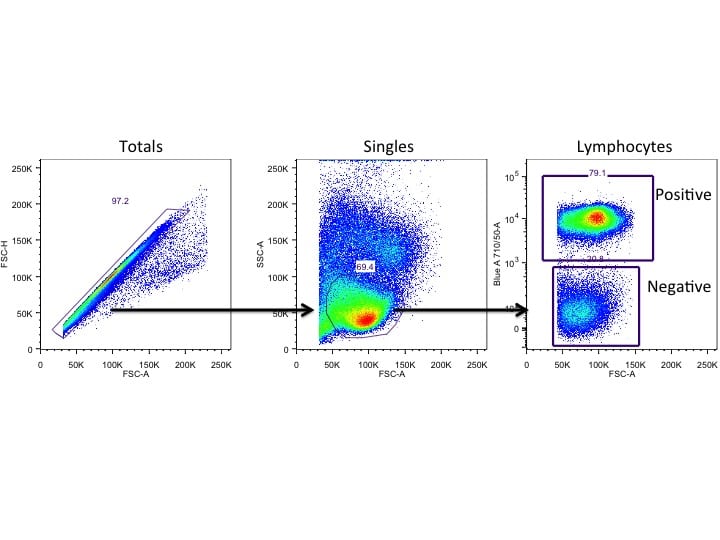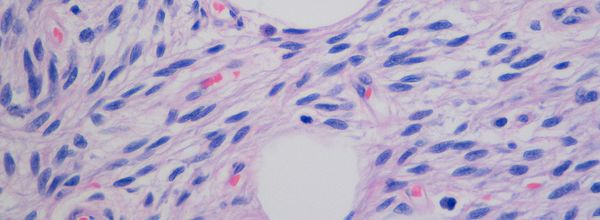During my first year of graduate school, I learned how to isolate bone marrow. I remember watching my mentor in awe, wondering how would I be able to do such a difficult technique. Flash forward to a few weeks later and I was confidently undertaking bone marrow isolation. Learning a new technique is always daunting, but with practice and a little insider knowledge, it becomes easier. Below I share some useful tips I’ve learned along the way.
If you have never read through a protocol on bone marrow isolation, there are numerous Jove articles demonstrating the technique. Here is a JoVE article on isolation and purification mouse bone marrow neutrophils to get you started.
But first, be sure to obtain the approval from your Institution’s Animal Care and Use Committee (IACUC) prior to beginning this procedure.
Why Perform Bone Marrow Isolation?
Bone marrow contains both hematopoietic and non-hematopoietic cells (aka stromal cells), making it a prime site for cell isolation. Hematopoietic cells comprise blood cells from either the lymphoid or myeloid lineage. Stromal cells (osteoblasts, endothelial cells, pericytes, etc.) are integral in maintaining the bone marrow niche required for hematopoiesis.
Bone marrow isolation favours high cell yields (5 x 106-3 x 107 cells/femur, 2 x 106-1 x 107 cells/tibia) [1] compared to blood isolation (2 x 103-10 x 103/?l) [2]. When isolating blood, you are limited to circulating leukocytes and the cell yields are highly dependent on the isolation site and volume collected.[2]. However, if you are interested in studying platelets, blood isolation is more practical as there is a large circulating platelet population (9×105-1.6×106/?L) [3]. Deciding which site (bone marrow versus blood) is dependent on the cell type you are interested in studying (hematopoietic vs non-hematopoietic). There are various protocols that can be utilised to isolate your cell of interest (see below).
Tips for Bone Marrow Isolation
1. Be Sterile
If you are planning on culturing your isolated cells (i.e. macrophages), work under aseptic conditions [4]. In my lab, we use a fume hood to remove the bones and then move to a cell culture hood to isolate the bone marrow. Note that at this point you have not cut the ends off the bones and therefore the bone marrow inside is still sterile. Thus, it is not super important to be completely sterile prior to isolation of the bones, so long as you don’t expose the intramedullary canal during the isolation process. Once you are in the cell culture hood, you can continue the process of isolating the bone marrow into a sterile tissue culture plate. Sterile conditions are less of a concern if you are isolating the cells and then immediately using them (i.e. lysing to isolate mRNA or protein).
2. Work on Ice
This involves keeping the tissue on an ice pack or in a dish on ice. (Keep in mind, aseptic technique matters more post-bone isolation.) Once in the cell culture hood, you can put ice into an autoclaved dish to hold your tubes and plates while processing the bone marrow. You can continue to keep your cells cold by using a refrigerated centrifuge. By working quickly and on ice, you reduce the likelihood that finicky cells, such as neutrophils, will become activated.
3. Use a High Gauge Needle and Small Syringe
A high gauge needle fits easily into the intramedullary canal of the bone. If you are unfamiliar with needle gauges, check out this site that gives a nice schematic showing how the gauge number corresponds to the needle opening. Needle gauges from 25 to 26.5 work well for isolating bone marrow. Don’t go too low, however, as you want to use a needle that is small enough to fit in the intramedullary canal of the bone. On the flip side, higher gauge needle will make it very inefficient in flushing the marrow from the bone. I personally prefer using a small syringe (i.e. 10mL) because it is easier to depress the plunger when dispelling the marrow from the bone. If you have larger hands, it may be easier to use a bigger syringe. Try different syringe sizes to see what works best for you.
4. In Need of a Lot of Cells? Isolate the Humerus Too!
Bone marrow is normally isolated from the long bones (femur, tibia, humerus). Most of the time, bone marrow collected from the femur and tibia will give a decent cell yield. However, if you need a lot of cells, consider isolating bone marrow from the humerus (2-5×106cells/humerus) [5].
5. Consider Whether Your Experimental Manipulations Will Affect Your Cell Yield
For example, I’ve found a drastic reduction in bone marrow white blood cells (WBCs) 4 hours after endotoxin injection. I recommend doing practice isolations on naïve mice – isolate the bone marrow and count your cells using a hemocytometer. See how many cells you can isolate at baseline (the more you practice the better your yields will be). Then you can do a set of practice isolations following your experimental manipulation to see whether that alters your cell yield. If you find that you are unable to isolate enough cells from the femur and tibia, consider also isolating bone marrow from the humerus.
You Have Your WBCs – Now What?
Below I list a few options for isolating discrete populations of WBCs. If you are interested in isolating stromal cells, check out this Bitesize Bio tutorial to get you started.
- Monocytes [6], neutrophils [7], and eosinophils [8] can be isolated using Miltenyi Biotec’s cell isolation kits and columns.
- Another isolation strategy involves plating the bone marrow cells in specific differentiation media and on certain cell culture plates. Enrichment media contain cytokines (i.e. M-CSF) that stimulate the growth of specific cells. Using specific cell culture plates (tissue-culture treated vs. non-tissue-culture treated) will also facilitate cell selectivity as some cells adhere whereas other cells remain in suspension.
- Density gradient centrifugation is also an option for isolating specific cell types (i.e. neutrophils, mononuclear cells).
- Fluorescence-activated cell sorting (FACs) can be used to isolate specific cell types, such as megakaryocytes. This is a challenging technique though so be sure to read up on this technique. Bitesize Bio has a wide array of articles covering FACs and flow cytometry – search either term to find them.
I hope the process of isolating bone marrow is less daunting now. My advice is to continue to practice until you feel comfortable with the technique. Also, be sure to consider how you will isolate your cells of interest once you’ve isolated the bone marrow.
References
- Mahajan MM et al. (2015) A quantitative assessment of the content of hematopoietic stem cells in mouse and human endosteal-bone marrow: a simple and rapid method for the isolation of mouse central bone marrow. BMC Hematol 15: 1-17.
- Nemzek JA et al. (2001) Differences in normal values for murine white blood cell counts and other hematological parameters based on sampling site. Inflamm Res 50: 523-527.
- O’Connell KE et al. (2015) Practical Murine Hematopathology: A Comparative Review and Implications for Research. Comp Med 65: 96-113.
- Pineda-Torra I et al. (2015) Isolation, culture, and polarization of murine bone marrow-derived and peritoneal macrophages. Methods Mol Biol 1339: 101-109.
- Protocol containing humerus bone marrow cell yield
- Olivia-Martin MJ et al. (2015) Evaluation of a method for murine monocyte isolation by bone marrow depletion. Anal Biochem 480: 42-48.
- Swamydas M et al. (2016) Isolation of mouse neutrophils. Curr Protoc Immunol 110: 3.20.1-3.20.15.
- Reichman H. et al. (2017) Mouse Eosinophils: Identification, Isolation, and Functional Analysis. Curr Protoc Immunol 119: 14.43.1-14.43.22.
- Manzanero S (2011) Generation of mouse bone marrow-derived macrophages. Methods Mol Biol 844:177-81.







